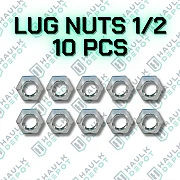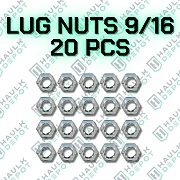Small Essentials








Mastering the Small Essentials for Trailer Safety and Efficiency
Lighting cannot be compromised when it comes to trailer safety. To make sure that your trailer is not only visible on the road but also complies with requirements, Small Essentials must be installed and operated properly. Depending on the size and kind of trailer, certain lighting specifications, such as side marker lamps, stop lamps, and tail lamps, must be fulfilled.
Prioritizing Proper Trailer Lighting Systems
An orderly collection of wires, connectors, and plugs intended to create electrical connections between a tow vehicle and its trailer is called a trailer wiring harness, sometimes referred to as a trailer wiring loom or trailer wiring connector. It acts as a link between the trailer's and the towing vehicle's electrical systems, facilitating efficient and seamless signal transmission. Trailers for a variety of purposes frequently use the SAE connector.
One of the most important lights on your car is the brake light. Although most automotive lights are necessary for safety, brake lights have a special purpose: they alert other drivers to your presence. If your brake lights aren't working, the car behind you might not be able to see when you're stopping or slowing down, which could result in a rear-end collision.
In order to keep your trailer visible to other drivers, particularly in dimly lit or inclement weather, trailer reflectors are essential. These straightforward yet efficient gadgets improve trailer visibility and lower the chance of traffic accidents. Reflectors are made to capture and reflect light, so that oncoming cars can see your trailer from a distance.
Exploring Types of Trailer Lights
Every size and form of trailer has different lighting requirements. The proper lighting arrangement is essential for safety whether you're hauling a custom-built item, a utility trailer, or a car hauler. This exposes you to possible legal problems in addition to raising the chance of accidents.
There are a number of alternatives available when it comes to selecting the ideal lights for your trailer, each having unique benefits:
-
LED Lights: Bright, energy-efficient, long-lasting, and vibration-resistant.
-
Halogen Lights: Strong beam and reliable, but shorter lifespan than LEDs.
-
Incandescent Lights: Soft light, higher energy use, and shorter lifespan compared to LEDs and halogens.
There are many options available, regardless of whether you require round, oval, or rectangular lights, or particular hues like amber for turn signals and red for brake lights.
Understanding Wiring and Setups
Three different types of wiring diagrams are available in the trailer lighting market: those for the 7-pole plug, the 13-pole Jaeger plug, and the 13-pole Multicon connector. It's crucial to clarify the distinction between the 7-pole and 13-pole plugs before moving on.
The 13-pole plug differs from the other plug in that it has more connections, which means it can do more tasks. Only the vehicle's basic lighting, such the brake lights and indicators, can be powered by a 7-pole connector. In contrast, the 13-pole plug provides power to the car for a number of purposes.
Connecting 7-pin Plug
For simpler tow items such a bicycle carrier, trailer, boat trailer, or horse trailer, the 7-pole plug version is appropriate. The basic illumination can be connected to your towing item using the 7-pole plug. Fog lights, turn signals, and brake lights are examples of the basic lighting that falls under the category of LED rear lights. The 7-pole plug still satisfies all requirements, even if the 13-pole socket is more comprehensive.
Connecting 13-pole Plug
Reverse lights, additional steady power, and switched power with ground are some of the uses for the extra pins on a 13-pin connector. For instance, you can use this additional steady electricity to charge your battery, run your caravan's refrigerator, or electrically open and close your trailer box. We strongly advise selecting the 13-pin plug over the 7-pin plug if you require any of these features.
Troubleshooting Common Lighting Issues
The electrical system of a trailer is rather straightforward but essential to its secure functioning. Over time, problems may be brought on by weather exposure, wear and tear, or subpar installations. The most frequent problems with trailer wiring include corrosion, broken wires, poor connections, and grounding concerns.
1. Inspect for Corrosion
Start by visually checking all of the wire and connectors for corrosion. You're probably dealing with corrosion if you find any green or white powdery material on the metal contacts. Use a wire brush or specialized electrical contact cleaner to clean these areas. By using dielectric grease, corrosion can be avoided in the future.
2. Check Connectors
Look for indications of wear or damage on connectors. Check for any debris or bent pins that could prevent a secure connection. It is advisable to swap out the damaged connectors for brand-new, premium connectors made specifically for trailer use.
3. Test and Replace Faulty Bulbs
Checking the bulbs is the first step when dealing with non-functioning lights. Replace any burned-out light bulbs by unscrewing the lamp cover. Always utilize replacements that are compatible with your trailer's voltage and power requirements.
4. Address Brake Light Issues
Brake light problems are frequently caused by problems in the wiring harness or a bad ground connection. Make sure the ground connection is tight, clean, and made to a proper grounding point first. Next, look for any obvious wear or corrosion on the wire leading to the brake lights. A multimeter can be used to find circuit breakdowns or deficiencies.
Why Upgrading to LED Systems
Increased visibility is one of the biggest advantages of switching to LED lighting. Compared to its incandescent equivalents, which can be dull and difficult to see, particularly at night or in bad weather, LED lights are brighter and more concentrated. The powerful light of LEDs makes your trailer more obvious to other cars, lowering the probability of accidents. Compared to conventional bulbs, LED lights react more quickly, giving signals for turning or braking sooner. Since it gives traffic behind you more time to respond, this immediate response time can be extremely important for road safety.
Simplifying Maintenance for Longevity
Maintaining the electrical and lighting systems in your trailer is essential to ensuring their dependability and efficiency. These seemingly straightforward mechanisms are important for maintaining your safety while driving, so don't undervalue them.
Inspect and Clean Your Trailer's Light Fixtures
Start by regularly checking the lighting system on your semi-trailers. Make sure your lights are clear of debris, dirt, and grime from the road. Your safety while driving may be jeopardized if your lights are less effective due to dirty or hazy lenses.
Regular Electrical System Checks for Peak Performance
Make it a point to examine all of the lights on your trailer on a regular basis to make sure they are operating properly. Ask someone to help you check the danger lights, turn signals, and brake lights while you drive. To avoid safety risks and early damage, make sure all lights are firmly fixed to the trailer.
Boosting Safety Through Advanced Accessories
In conclusion, for a safe towing experience, trailer safety must be prioritized through cutting-edge Small Essentials and appropriate maintenance. These modest but important investments, which range from making sure lighting systems are in compliance to utilizing contemporary technologies not only increase visibility but also reduce road hazards. Drivers can attain efficiency and peace of mind by being aware of configurations, selecting appropriate lights, and taking proactive measures to resolve common problems.












